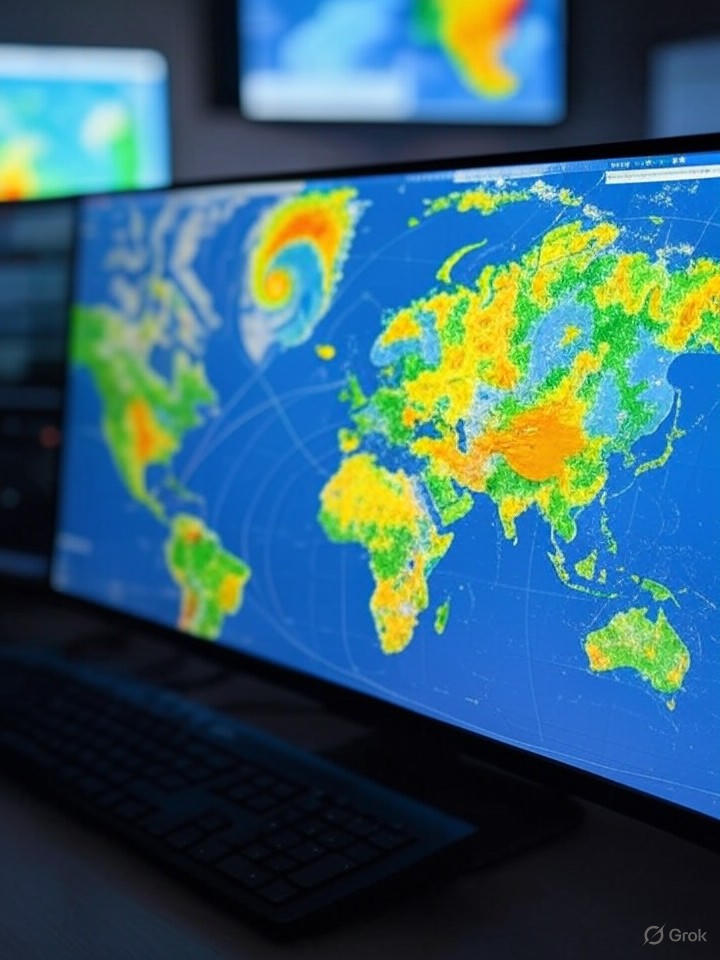In a move that underscores the growing intersection of artificial intelligence and meteorology, Google DeepMind has unveiled a new initiative aimed at revolutionizing how we predict and track tropical cyclones. The company’s recent announcement details the launch of Weather Lab, an interactive online platform designed to showcase advanced AI-driven weather models. This development comes as climate events become increasingly unpredictable, prompting tech giants to deploy machine learning tools for more precise forecasting.
At the heart of this announcement is an experimental AI model specifically tailored for cyclone prediction and tracking. According to the Google blog post, the system leverages vast datasets and neural networks to generate forecasts that extend up to 15 days ahead, offering insights into storm paths, intensity, and potential impacts. This builds on prior innovations like GraphCast, DeepMind’s earlier AI forecasting model that promised faster global weather predictions.
Enhancing Accuracy Through AI Integration
Industry experts note that traditional cyclone tracking relies on physics-based simulations, which can be computationally intensive and less adaptable to real-time data shifts. DeepMind’s new model, however, uses generative AI to simulate multiple scenarios, potentially reducing errors in early-stage predictions. The announcement highlights initial tests showing improved accuracy over conventional methods, particularly in regions prone to hurricanes and typhoons.
Partnerships play a crucial role here, with Google collaborating with the U.S. National Hurricane Center (NHC) to integrate these AI tools into official forecasting workflows. As reported in a New York Times article, the NHC will experiment with DeepMind’s program this cyclone season, aiming to augment human expertise rather than replace it. This collaboration could set a precedent for how AI assists in disaster preparedness.
Technical Underpinnings and Potential Challenges
Delving deeper, the Weather Lab platform allows users to interact with visualizations of cyclone tracks, wind speeds, and precipitation patterns. Drawing from DeepMind’s own blog, the AI model is trained on decades of historical weather data, incorporating variables like sea surface temperatures and atmospheric pressure. This data-driven approach enables the system to predict not just the storm’s path but also its rapid intensification, a phenomenon that has caught forecasters off guard in recent years.
Yet, challenges remain. Critics in the meteorological community caution that AI models, while speedy, must be rigorously validated against real-world events to avoid overreliance. The announcement acknowledges this, emphasizing that the tool is experimental and intended for research purposes initially. Moreover, ethical considerations around data privacy and model transparency are paramount, as AI systems process sensitive environmental information.
Broader Implications for Climate Tech
Looking ahead, this initiative could accelerate advancements in climate tech, where AI is increasingly used for everything from flood modeling to wildfire prediction. Sources like VentureBeat suggest that DeepMind’s work might “change hurricane forecasting forever,” by providing tools that are not only more accurate but also accessible to global agencies beyond the U.S.
For industry insiders, the real value lies in scalability. If successful, Weather Lab could expand to cover other extreme weather events, fostering international collaborations. As cyclones grow more frequent due to climate change, such innovations offer a glimmer of hope for better mitigation strategies, potentially saving lives and resources in vulnerable communities. Google DeepMind’s push here signals a commitment to applying AI for societal good, even as questions about long-term efficacy persist.




 WebProNews is an iEntry Publication
WebProNews is an iEntry Publication